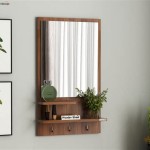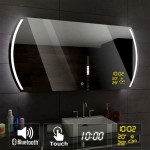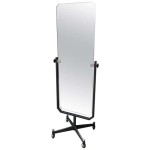Screen Mirror iPhone to MacBook Without Apple TV
Mirroring an iPhone's screen to a MacBook offers a convenient way to share presentations, demonstrate apps, stream videos, or enjoy mobile games on a larger display. While Apple TV simplifies this process, dedicated hardware isn't always necessary. Several methods allow for screen mirroring from an iPhone to a MacBook without relying on Apple TV.
Utilizing Third-Party Applications
Several third-party applications facilitate wireless screen mirroring between an iPhone and a MacBook. These applications typically create a virtual receiver on the MacBook, mimicking the function of an Apple TV. The iPhone then connects to this virtual receiver, allowing the screen content to be streamed. Some popular options include:
Reflector: Reflector is a widely used application that supports mirroring from various devices, including iPhones, iPads, and Android devices. It offers features like screen recording, customizable frames, and streaming to multiple devices simultaneously.
AirServer: AirServer functions similarly to Reflector, enabling users to mirror their iPhone screens to their MacBooks. It also supports other AirPlay-compatible devices and offers features like picture-in-picture and YouTube streaming directly to the mirrored display.
LonelyScreen: LonelyScreen is another viable option that establishes a virtual AirPlay receiver on the MacBook, allowing for straightforward iPhone screen mirroring. It's known for its ease of use and relatively low resource consumption.
Users should download and install the chosen application on their MacBook. Once installed, the application needs to be launched, activating the virtual AirPlay receiver. Subsequently, users can open the Control Center on their iPhone, access the "Screen Mirroring" option, and select the MacBook displaying the application's name. The iPhone screen will then be mirrored to the MacBook display. It's important to ensure both the iPhone and MacBook are connected to the same Wi-Fi network for seamless operation.
Leveraging QuickTime Player
A lesser-known, yet effective method for screen mirroring involves utilizing QuickTime Player, a pre-installed application on macOS. This method offers a wired connection, eliminating potential lag associated with wireless mirroring. While it requires a physical connection, it can provide a more stable mirroring experience.
To utilize this method, users need to connect their iPhone to their MacBook using a Lightning to USB cable. Then, users should open QuickTime Player on their MacBook. Within QuickTime Player, select "File" from the menu bar and then choose "New Movie Recording". Next to the record button, a small dropdown arrow appears. Clicking this arrow reveals a list of available cameras and microphones. Users should select their connected iPhone as the camera input source. The iPhone's screen will then be displayed within the QuickTime Player window on the MacBook.
This method offers a straightforward screen mirroring solution without requiring any additional software downloads. The wired connection ensures a reliable and lag-free mirroring experience, which can be particularly advantageous for demonstrations or presentations where smooth performance is critical.
Using a USB Connection and Third-Party Software (Advanced)
For developers or users requiring more advanced screen mirroring functionalities, utilizing a USB connection combined with specific third-party software can offer a more robust solution. This method allows for interactions with the mirrored iPhone screen directly on the MacBook, providing additional control and flexibility.
Software like Xcode, Apple's integrated development environment, allows developers to mirror and interact with connected iOS devices. Xcode provides tools for debugging, testing, and analyzing app performance on various iOS devices. While this method requires a developer account and familiarity with Xcode, it offers a comprehensive solution for advanced screen mirroring and app development purposes.
Some third-party applications, designed for specific tasks like mobile game streaming, also offer screen mirroring functionality via a USB connection. These applications often optimize performance and latency for specific use cases like gaming or streaming.
Connecting the iPhone to the MacBook with a USB cable and then launching the chosen software initiates the mirroring process. Users should configure the software to recognize the connected iPhone as the input source. The level of interaction and available features will depend on the specific software used. This advanced method provides a powerful solution for users requiring a high level of control and functionality beyond basic screen mirroring.
Choosing the appropriate method depends on individual needs and access to resources. While third-party applications offer convenient wireless mirroring, QuickTime Player provides a reliable wired alternative. Advanced users requiring more control can explore USB-based solutions with specialized software.

How To Mirror Iphone Tv Without Apple

Top 3 Awesome Ways To Mirror Mac Tv Without Apple

How To Mirror Iphone Tv Without Apple

2024 Updated How To Mirror Iphone Mac With 5 Methods

How To Mirror Iphone Mac Wirelessly Full Guide

How To Mirror Iphone Mac Without Wi Fi

Screen Mirroring Iphone Or Macbook To Tv Without Apple

5 Solutions To Airplay Mirroring Without Apple Tv 2024 Dr Fone

How To Mirror Iphone Mac Wirelessly Full Guide

4 Ways How To Mirror Iphone Mac Without Wifi Airdroid








